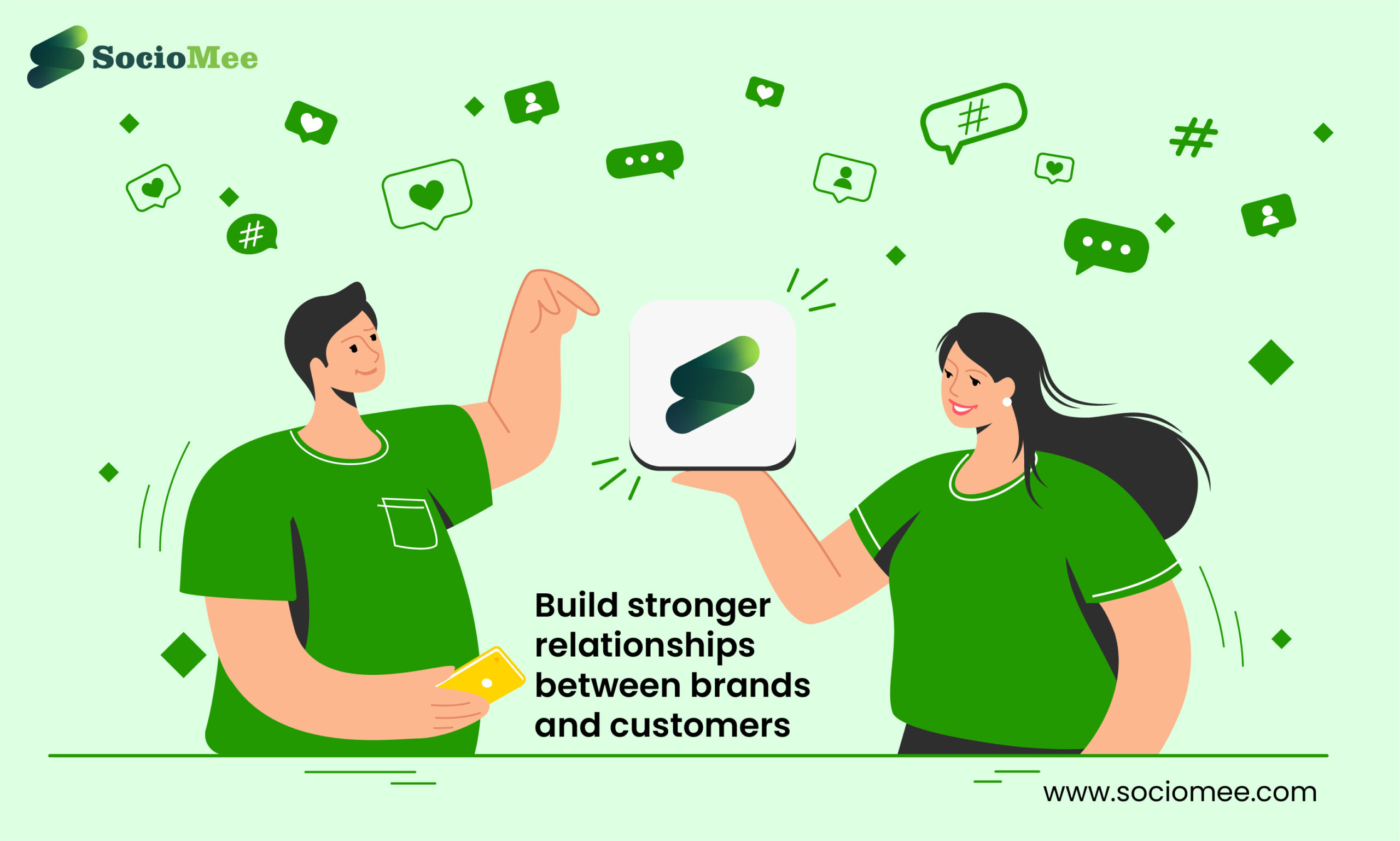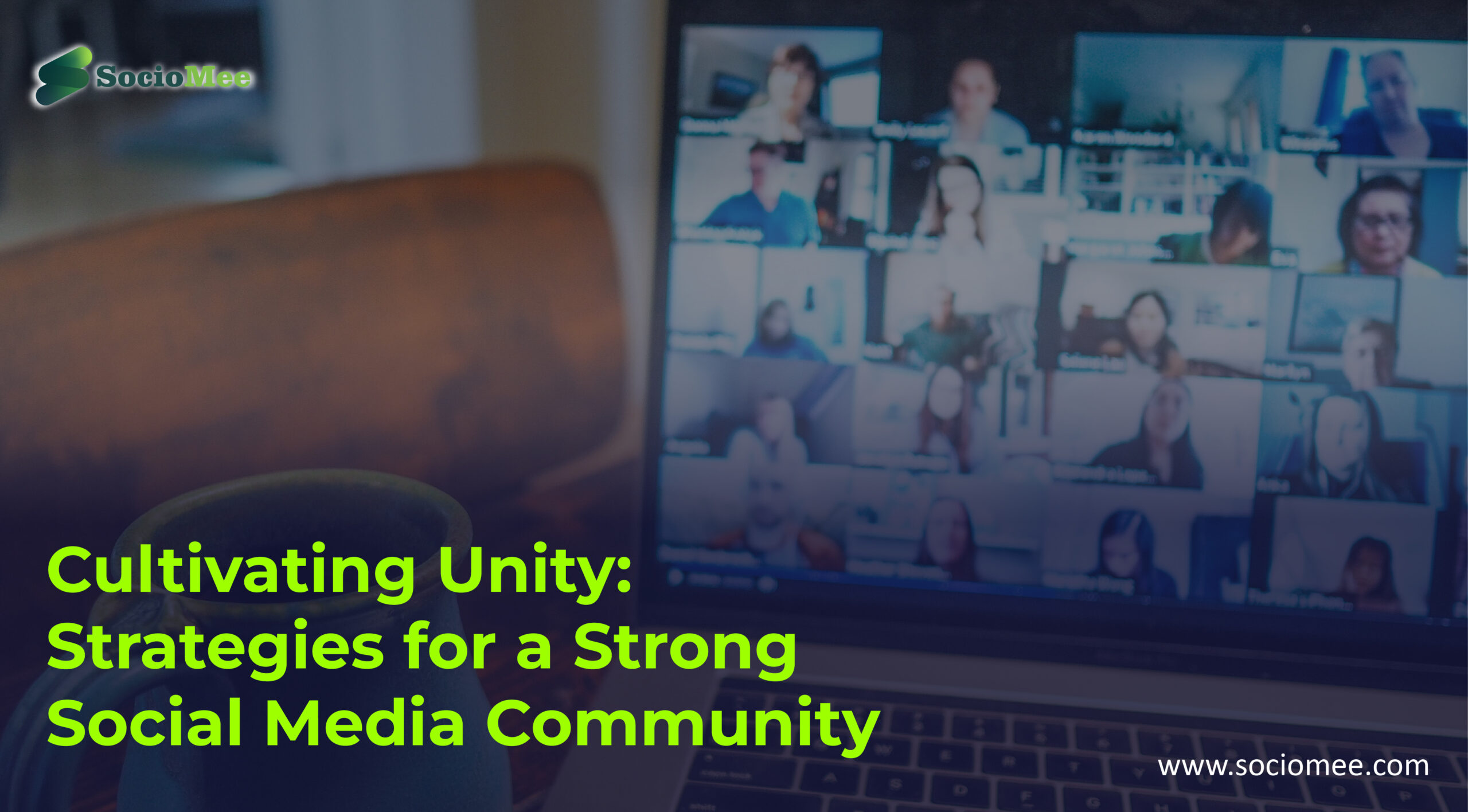As technology continues to rapidly evolve, businesses are being presented with an unprecedented opportunity to build stronger relationships with their customers through social media. By leveraging the power of social media, companies can create a more personal connection with their customers and build a sense of community and trust.
In this article, we will explore the various ways in which businesses can use social media to build stronger relationships with their customers, including engaging with customers on a more personal level, creating meaningful content, and embracing customer feedback.
#1. Exploring the Benefits of Leveraging Social Media for Brand-Customer Relationships in 2023
As the landscape of marketing and communication continues to evolve, brands are leveraging social media more than ever to cultivate relationships with their customers. In 2023, the benefits of leveraging social media for brand-customer relationships will be even greater.
- For starters, social media will become a powerful tool for brands to connect with customers on a more personal level. Brands can share stories, jokes, updates, and behind-the-scenes looks at their company to give customers a better understanding of who they are and what they stand for. This will help build trust and create a sense of loyalty among customers.
- Another benefit of leveraging social media in 2023 will be the ability to track customer sentiment. Brands can use social media to monitor comments, likes, and shares to get a gauge of how their customers feel about them. This data can then be used to create strategies to better engage customers and build stronger relationships.
- Lastly, social media will become an important platform for brands to engage in meaningful conversations with their customers. Brands will have the opportunity to connect with customers to solve problems, answer questions, and provide feedback. This will help create a sense of community around the brand and encourage customers to be more invested in the company.
By leveraging social media in 2023, brands will be able to build stronger relationships with their customers. This will lead to increased customer loyalty, better customer sentiment, and deeper customer engagement. In the end, it will result in an improved brand image and increased revenue.
Connect with new world
#2. Harnessing Social Media Platforms to Strengthen Brand-Customer Relationships:
Today, businesses of all sizes rely on social media platforms to build successful relationships with customers. By leveraging the power of these platforms, businesses can strengthen their brand-customer relationships, reaching out to potential customers and engaging current customers in meaningful ways. When it comes to harnessing social media platforms, there are a few key strategies that businesses can use. First, businesses should make sure they have a presence on the most popular social media platforms, such as SocioMee and MsgMee. This will allow businesses to reach the widest possible audience and ensure that customers can find them easily. Once businesses have created their social media accounts, they should create a strategy for engaging with customers.
This could include posting relevant content, responding to customer questions and comments, and responding to any negative feedback in a timely and professional manner. Additionally, businesses should take advantage of the different features offered by each platform, such as polls and surveys, which can help them gain valuable insights into their customers’ needs and preferences. Finally, businesses should track the success of their social media campaigns, using metrics such as likes, shares, and comments to measure the impact of their efforts.
This will help businesses understand what approaches are working and which ones should be tweaked or abandoned altogether.
#3. Using Social Media to Create Engaging Brand-Customer Interactions:
The use of social media to create engaging brand-customer interactions is one of the most effective ways to build relationships with customers and increase brand loyalty. Social media platforms allow brands to interact with customers in real-time, providing customers with an engaging and personalized experience. By creating meaningful conversations and providing valuable content, brands can foster loyalty and build relationships with customers.
The key to successful brand-customer interactions on social media is to create content that resonates with customers and encourages them to engage. Brands should focus on content that is informative, entertaining, and relevant to the customer’s interests. Content should be tailored to the individual customer, addressing their needs and providing solutions. By providing content that customers find valuable and engaging, brands can increase their customer base, build relationships, and increase loyalty. In addition to creating engaging content, brands should also focus on responding to customer comments and inquiries in a timely manner.
By responding quickly and accurately to customer inquiries, brands can demonstrate their commitment to customer service and strengthen customer loyalty. Finally, brands should use social media to create a dialogue between themselves and their customers. This can be done by hosting conversations, encouraging customer feedback, and staying up to date on the latest trends and topics. By creating an open dialogue between the brand and the customer, brands can create an engaging experience and foster loyalty.
#4.The Role of Automation in Enhancing Brand-Customer Relationships
Automation has had a major impact on many aspects of modern life, and its influence is only growing. With its ability to streamline processes and make tasks more efficient, automation has become an increasingly important tool for businesses looking to enhance their brand-customer relationships. By incorporating automation into their customer engagement strategies, businesses can dramatically improve the customer experience. Automation can be used to automate mundane tasks such as sending out automated emails and reminders, providing personalized messages, and responding to customer inquiries.
This not only makes customer service more efficient, but can also help to create a more personalized customer experience. Automation also allows businesses to provide customers with more personalized service, such as providing tailored product recommendations and discounts. In addition to helping to provide a more personalized customer experience, automation can also help to build loyalty and trust. Automation can be used to automate the process of gathering customer feedback, which can be used to improve customer service and create more meaningful relationships. Automation can also be used to measure customer satisfaction levels and to detect any issues that may arise. This feedback can be used to adjust customer service strategies and address any issues that may be present.
Finally, automation can be used to streamline the customer experience and make it easier for customers to interact with the brand. By automating mundane tasks, businesses can reduce the amount of manual labor required, freeing up more time for customer service and other tasks. Automation can also be used to provide customers with a more streamlined and efficient shopping experience, allowing them to complete their purchases quickly and easily.
Connect with new social community
#5. Leveraging Social Media Insights to Better Understand Customer Needs
Social media has become an essential tool for businesses to connect with customers, understand customer needs and preferences, and create better customer experiences. By leveraging social media insights, organizations can gain valuable insights into the needs and behaviors of their customers, enabling them to better meet those needs and create more personalized experiences. Social media insights can provide businesses with a wealth of data and insights. By closely monitoring customer comments, reviews, and interactions on social media, businesses can gain an understanding of what customers want and need. This can help businesses to identify trends in customer preferences and behaviors, which can then be used to create more targeted and tailored experiences.
Furthermore, businesses can use social media insights to inform product and service design. By monitoring customer comments, businesses can gain a better understanding of the features and benefits that customers find most valuable, and can then use this information to inform the design of their products and services. Finally, businesses can use social media insights to create more effective marketing and advertising campaigns. By closely monitoring customer comments and reactions to different campaigns, businesses can gain an understanding of what works and what doesn’t, allowing them to refine their campaigns to be more successful.
#6. Making the Most of Influencer-Driven Strategies to Strengthen Brand-Customer Relationships
In today’s digital world, influencer-driven marketing strategies are becoming increasingly popular as a way to strengthen relationships between brands and customers. By leveraging the power of influencer marketing, brands can reach a wider audience, create more engaging content, and authentically connect with their customers.
Here are a few tips to make the most of influencer-driven strategies to strengthen brand-customer relationships:
- Identify the Right Influencers: It’s important to select influencers that align with your brand’s values and target audience. Research the influencers you’re considering, and make sure their content resonates with your target market.
- Develop a Cohesive Brand Message: Develop a unified message and content strategy for your influencer campaign. This will ensure that all influencers are on the same page and creating content that reflects your brand’s values and mission.
- Give Influencers Freedom to Create: When working with influencers, it’s important to give them the creative freedom to create content that they believe will resonate with their audience. By allowing them to create content that reflects their own style and interests, you’ll be more likely to create content that resonates with your target audience.
- Monitor Performance: Monitor the performance of your influencer campaigns to better understand what’s working and what isn’t. Use analytics to track engagement, reach, and other metrics to help you understand what content resonates with your audience and make adjustments as needed.
By utilizing influencer-driven strategies, brands can build stronger relationships with their customers and create more engaging content. By following these tips, you can ensure that your influencer campaigns are successful and help you strengthen brand-customer relationships.
#7. Crafting Social Media Strategies that Drive Brand Loyalty:
Crafting social media strategies that drive brand loyalty is essential for any business looking to increase their customer base and build relationships with their customers. By utilizing effective social media strategies, businesses can create a loyal and engaged customer base that is more likely to recommend the business to others and make repeat purchases. The first step to creating social media strategies that drive brand loyalty is to create a clear and consistent message. Brand messaging should be consistent across all platforms and channels and should communicate the identity and values of the brand. This could include sharing stories, showcasing products and services, engaging with customers, and providing valuable content to the audience.
Another important element of a successful social media strategy is engaging with customers. This could include responding to questions, thanking customers for their feedback, and addressing any complaints in a timely manner. Additionally, it’s a good idea to encourage customers to share their experiences with the brand on social media and reward loyalty by offering exclusive discounts or promotions. Finally, businesses should also consider creating content specifically for their target audience. This could include creating videos, webinars, or blog posts that provide valuable information and advice related to the business and its products/services. This not only helps build trust with customers but also shows that the business cares about their customers.
By utilizing these strategies, businesses can create a loyal and engaged customer base that is more likely to recommend the business to others and make repeat purchases. With the right social media strategies, businesses can create a strong and successful brand that customers are proud to be a part of.
#8. Analyzing Social Media Metrics to Track Brand-Customer Relationships
Analyzing social media metrics is a powerful tool for tracking brand-customer relationships. Companies that effectively use metrics to measure their social media performance can develop strategies to improve customer engagement, loyalty, and satisfaction. Social media metrics are a set of measurements that can be used to track the performance of a company’s social media presence. They provide valuable insights into customer behavior, allowing companies to understand the impact of their branding and marketing efforts. Social media metrics can be used to measure customer engagement, brand awareness, customer satisfaction, and customer loyalty. Analyzing social media metrics can help companies identify areas for improvement in their customer relationships. Companies can use metrics to measure the effectiveness of their campaigns and identify areas where customers are not engaging with the brand. Companies can use metrics to identify any discrepancies between customer perception and reality. Companies can use metrics to track customer sentiment over time. This can help companies understand how customers feel about their brand and identify any negative trends. Companies can use metrics to determine which topics are resonating with customers and which are not.
Analyzing social media metrics can help companies measure customer loyalty. Companies can track customer retention, repeat purchases, and customer satisfaction. Companies can also measure customer advocacy, which can be used to measure the success of customer loyalty programs. By using social media metrics, companies can gain a better understanding of their customers and develop strategies to improve customer relationships. Metrics can be used to monitor customer behaviour, identify areas for improvement, and measure the success of customer engagement initiatives. Companies can use metrics to track trends and adjust their strategies to meet customer needs. Companies can also use metrics to measure the impact of their branding and marketing efforts.
#9. Minimizing Social Media Risks to Protect Brand-Customer Relationships
As businesses increasingly rely on social media to generate customer engagement, they must also consider the risks associated with using the platform. Social media can be a powerful tool for connecting with customers, but it’s also a double-edged sword—a negative post or comment can quickly damage a brand’s reputation. To protect their brand-customer relationships, businesses must take steps to minimize the risks associated with social media.
- Monitor Social Media Activity: It’s important to stay on top of any comments or posts that are made about your brand. Monitor social media activity on a regular basis to ensure that your brand’s reputation is not being damaged by negative comments or posts.
- Respond Quickly & Appropriately: If a customer has a negative experience or posts a negative comment, it’s important to respond quickly and appropriately. A timely response shows customers that you’re listening and that you care about their opinion.
- Set A Proper Guidelines: Establishing guidelines for social media use is an important way to protect your brand-customer relationships. Establishing guidelines for acceptable behavior and language helps ensure that customers are treated with respect and that any negative posts or comments are addressed in a timely manner.
- Maintain Transparency: Being transparent about your brand’s policies and practices is essential for protecting customer relationships. Customers appreciate when businesses are open and honest about their operations.
- Adopt a Social Media Policy: Having a social media policy in place is an important way to protect your brand-customer relationships. A social media policy helps ensure that customers are treated fairly and that their concerns are addressed in a timely manner.
By taking steps to minimize the risks associated with social media, businesses can protect their brand-customer relationships and ensure that customers feel valued and respected. With a proactive approach to managing social media, businesses can build strong relationships with their customers and maintain a positive reputation.
#10. Developing Innovative Strategies to Maximize Social Media Impact on Brand-Customer Relationships
In the digital age, social media has become an essential tool for connecting with customers and helping businesses increase brand awareness. Social media has created an interactive platform for companies to engage with their customers, build relationships, and create an emotional connection. Developing innovative strategies to maximize the impact of these relationships is essential for businesses to remain competitive. The first step in developing effective social media strategies is to identify customer needs and preferences.
Companies can use customer surveys and polls to gain insights into customer behavior and preferences. Analyzing customer data can help businesses create content that is relevant to customer interests and needs. Companies should also experiment with different content formats such as videos, images, and infographics to reach a wider audience. In addition to creating content, businesses should also focus on developing relationships with customers. Companies should use various social media channels to interact with customers and build relationships. Companies should also use social media to provide customer service and respond to customer inquiries in a timely manner.
Lastly, businesses should use social media to measure the impact of their campaigns. Companies can use metrics such as engagement rates, reach, and lead generation to measure the success of their social media campaigns. Companies should also track customer feedback to understand how their campaigns are being received by customers.
Conclusion
In conclusion, leveraging social media for brand-customer relationships is a smart move for businesses. Social media provides an opportunity for brands to interact with their customers in a meaningful way, build trust, foster loyalty, and cultivate relationships that can lead to increased sales in the long run. By taking the time to develop an effective social media strategy, businesses can use this powerful tool to create an invaluable connection with their customers and gain a competitive edge in their industry.









